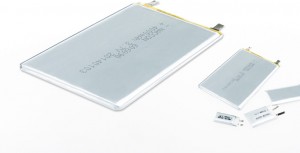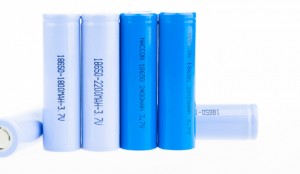 Lithium ion batteries commonly known as the “lithium electricity”, is one of the best comprehensive properties of the battery system. Lithium ion battery anode carbon materials, such as graphite. The anode is lithium transition metal oxides, such as LiMn2O4.
Lithium ion batteries commonly known as the “lithium electricity”, is one of the best comprehensive properties of the battery system. Lithium ion battery anode carbon materials, such as graphite. The anode is lithium transition metal oxides, such as LiMn2O4.
The advantages of lithium ion battery:
1, high working voltage, working voltage is 3.6 V lithium ion batteries, nickel cadmium and nickel metal hydride is three times the working voltage of the battery.
2, high energy. Lithium ion battery power has now 140 wh/kg, is 3 times of nickel cadmium battery, nickel metal hydride batteries of 1.5 times.
3, long cycle life. The lithium ion battery cycle life has reached more than 1000 times, under the low discharge depth can reach tens of thousands of times, more than several other secondary battery.
4, small self-discharge. Lithium ion battery self-discharge rate was only about 6-8%, far below the nickel cadmium battery (25-30%) and nimh batteries (30 ~ 40%). 5, no memory effect. Can charge at any time according to the requirement, and will not reduce the battery performance.
6, no pollution to the environment. No harmful material in lithium ion batteries, it is worthy of the name “green batteries”.
Battery lithium polymer batteries is to update the generation, mass in 1999 to enter the market. Lithium polymer batteries in addition to outside is a solid polymer electrolyte, rather than a liquid electrolyte, and the rest of the lithium ion battery are basically the same.
Melt polymer electrolyte materials are made of plain film, the main body in the solution of polymers such as polyethylene oxide as solvent of does not move. Lithium polymer battery has the advantage that can be made into any shape and comparatively light, and this is because it does not contain heavy metals and plastic shell have keep electrolyte is not leaked. Their performance are better, the ideal state of lithium polymer battery capacity up to thousands of mA/h, and safer. Solid electrolyte as a sealing gel, not easily in the process of charging the dissolution.
Lithium polymer battery and lithium ion battery technology can replace Nicd batteries. But the price is too high, the market is not fully accepted, especially lithium polymer technology. Darnell group analyst Brush that: polymer battery will not always more expensive than lithium ion batteries, the current production situation is your a lot of, this will promote the development of the lithium ion battery technology. Formerly used for laptop lithium ion battery cost is $41.42, is used in the polymer battery for my laptop cost is $60.80.
Rechargeable lithium battery is successfully developed in 1996, is the fifth generation of rechargeable battery product, solves the key to the safety of the lithium ion battery is difficult to solve, its safety, specific capacity, self-discharge rate and the cost performance is better than that of lithium ion batteries. Is one of the forefront of the international green energy and high-tech, low project cost, high technical content, at present only a few countries such as America, Japan and Israel of a few companies in the production.
Market prospect: due to cheaper raw material, production process is simplified, the comprehensive cost is low, is widely used in portable computers, radio, walkie-talkie, cameras and mobile phones, and the battery is a kind of consumer goods, consumption is great. Has a very broad market.
Lithium ion battery of the rated voltage of 3.6 V (some products of 3.7 V). Fully charged when the termination of charging voltage is related to battery anode material: 4.2 V for graphite anode materials; Anode material for coke is 4.1 V. Different internal resistance of the anode materials are also different, coke is slightly superior to internal resistance of the anode, the discharge curve is also slightly different, as shown in figure 1. Commonly referred to as 4.1 V and 4.2 V li-ion battery lithium ion batteries. Now use most is 4.2 V, the termination of lithium ion battery discharge voltage of 2.5 V ~ 2.75 V (battery factories are working voltage range, or termination of the discharge voltage, the parameters are slightly different). Below terminate discharge voltage continue discharge called discharge, discharge of the battery will be damage.
Lithium ion battery, lithium polymer battery and lithium metal batteries
Category: Enterprise News, NEWS.